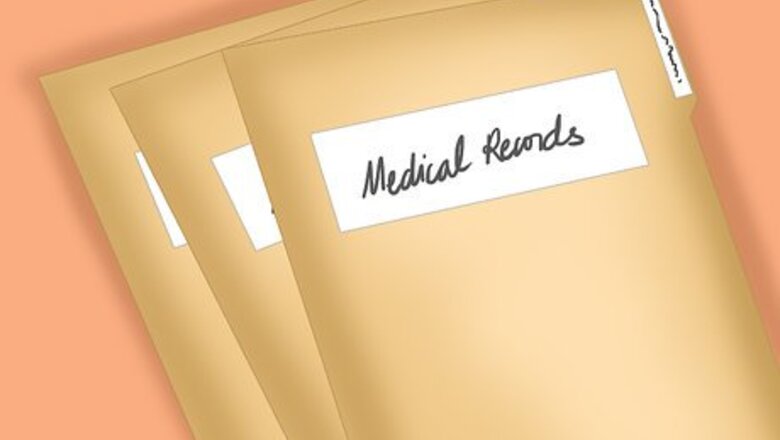
views
X
Trustworthy Source
Johns Hopkins Medicine
Official resource database of the world-leading Johns Hopkins Hospital
Go to source
This is likely also the case for people with other chronic conditions such as cancer, diabetes and arthritis.
Organizing Hard Copies
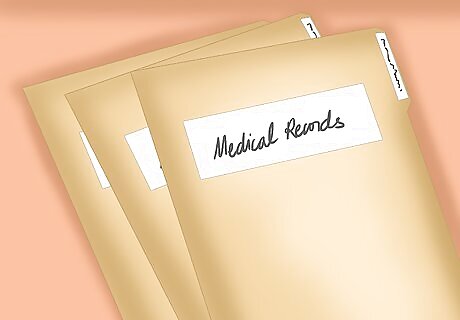
Ask your caregivers for access to your medical files. The first step in organizing your personal medical record is to collect hard (physical) copies of as much information about your treatments and diagnoses as you can from all your caregivers, including physicians, nurse practitioners, chiropractors, physiotherapists, psychologists, etc. Keep in mind that federal law requires all doctors and medical facilities to allow you access to your medical records. Remember to be polite and patient when asking to access your medical files. Tell them it's to establish your own personal records. Some doctors and medical facilities might be hesitant to allow you access due to fear of malpractice litigation. Your caregiver may need some time to organize your medical information because it may not all be in a single file. Schedule an appointment to come back if that's the case. Keep in mind that a personal medical record combines all the medical information collected by each caregiver/medical facility that you've been to into a single file that's easily accessed. While federal law gives you the right to access most of your Patient Health Information (medical records, imaging, test results, billing records, etc.), some types of information are exempted. For example, you do not have a right to access psychotherapy notes (i.e., notes taken by a mental health professional during a counseling session) or documents compiled for use in a civil or criminal proceeding.
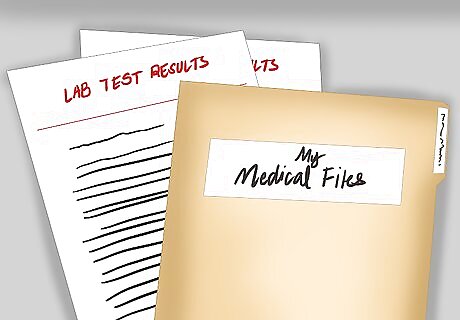
Copy all the documents in your medical files. Once you've notified the caregiver of your intentions and they've organized your medical information, it's time to make copies of it all. Your personal medical record should include copies of all test/lab results, diagnoses, treatment reports, radiology reports, progress notes insurance statements and referrals from each caregiver/medical facility you've visited. Don't expect the actual caregiver to copy your file for you. Likely their support staff will be the ones to do the actual copying. Although you own your medical information, you don't own the actual paper, files and x-rays that your info is on, so don't expect to walk out with the originals. You're only entitled to copies from the originals. Your caregiver/medical facility has the legal right to charge you a copying fee, so ask how much it might cost. They may charge per page or a flat fee for the copying service. You'll likely need to sign a release form at every facility that you request records from.
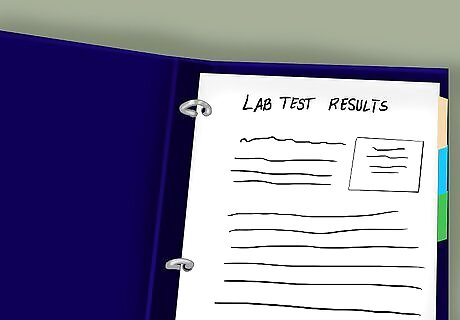
Organize and put your hard copies in a binder. Once you've copied your original medical files, separate them by making a pile for each medical provider. Then, order the records for each provider from your earliest visit to your most recent, in chronological order. This type of organization will make it quick and easy to find information. Punch holes in your medical records along the left margin with a 3-hole punch and place them in a sturdy three-ring binder or wire-bound notebook (maybe with dividers for each family member, or even a binder for each family member). Use different colored index dividers to organize your medical records by medical provider and/or facility. In addition to color coding, organize multiple doctors alphabetically within the binder. Consider reinforcing the punch holes of your copied documents, especially if you or your caregivers are looking through the binder frequently. Keep in mind that any documents related to insurance claims/payments should be kept for up to five years, although if they're related to your tax returns, keep them for at least seven years.
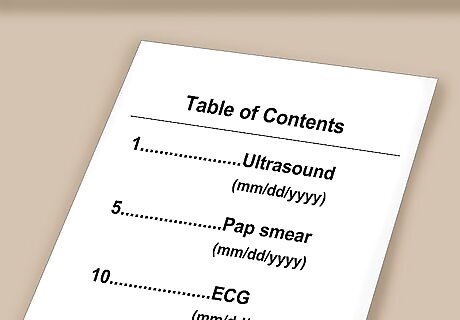
Create a table of contents. Use a word processing program on your computer to type up a table of contents for your personal medical records. The table of content page should outline the color-coded providers that you've seen and be listed chronologically and/or alphabetically — it'll be much easier for busy healthcare professionals to navigate. Print the table of contents out onto a thicker piece of paper so it'll be more resistant to tearing or wearing out. Use large and legible font for the content page — nothing too fancy or artistic (remember it's not a scrapbook you're making). If necessary, visit the website of the company that manufactured your index dividers for assistance in creating a printed table of contents. Use the blank table of contents that may have been included with the index dividers that you purchased for your binder.
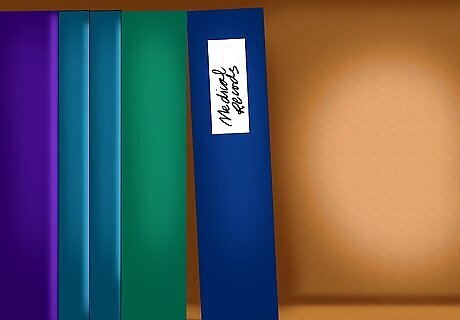
Keep your binder/notebook secure. Once you have all the hard copies of your medical records organized in a sturdy three-ring binder or wire-bound notebook, store it on a stable bookshelf or in a lockable filing cabinet at home, away from the grasp of children and pets. Having your medical records at home allows you to read and understand them at your leisure, which can help you feel more in control of your health and better choose your therapies. For additional security and safety, consider keeping your binder of hard copies in a fireproof home safe or box. It may be more convenient to have your hard copies handy and near to where your desk and computer are, then focus on securing the digital copies instead (see below).
Making an Electronic Copy
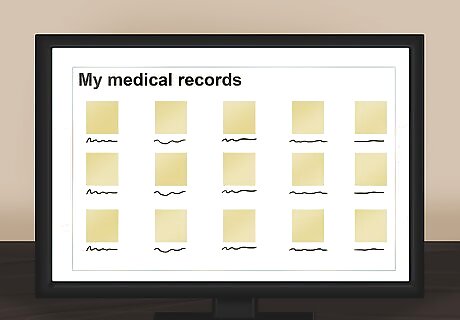
Scan your medical records into your computer. Once you've got all the hard copies of your health record, you should also scan them into digital/electronic copies. Having a digital copy of your medical records will protect you in the event that your paper copies are damaged or lost — this is of particular concern for people who live in areas that have high risk of flooding, tornadoes, earthquakes and other natural disasters. Most printers have the ability to scan documents, so no other equipment is typically required. Once you scan the hard copies into your computer, create a "Medical Records" folder and then a few subfolders for each medical provider. Drop the scanned files into the applicable folders. As an alternative, you can input the data from your hard copies into your computer by hand (by typing), but that's a lot more time consuming then scanning them.
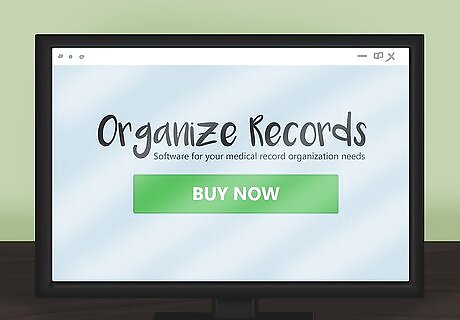
Buy software specifically for personal medical records. If you have word processing software you're familiar with, that's great, but realize that there's also software specifically designed to organize your personal medical records. You'll still have to scan the physical documents, but the special software will do virtually all of the organizing for you. The cost of new software typically ranges from $25 to $75, and may include some sort of online technical support as well. Search online for the software that best suits your budget and level of computer expertise. Some companies may offer free trials for limited periods of time. Regardless of how your files are organized on your computer, they should be backed up onto a physical CD, external hard drive or portable flash drive.
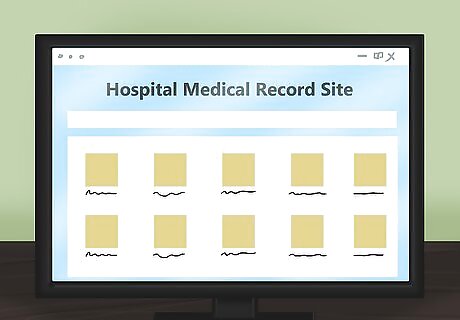
Check for online health records. Some healthcare providers, hospitals and insurance plans offer online records that you can access remotely. In other words, they place your medical records online (with your permission and on a secured database), so you can conveniently access them from your computer at home or even from your phone. If that's the case with your caregivers, then that might save you the time and hassle of scanning your hard copies. You may need special apps and/or programs in order to access and navigate your online health records. Ask your primary caregiver (or their staff) for recommendations. If you're worried about security of your personal information online, you can request that your caregiver/medical facility not store any of your files online.

Store your health records online. Another electronic option is to store your personal health records on a secure third-party Internet site (or on the "cloud") once you've scanned the documents into your computer. In fact, your health insurance plan, primary caregiver or hospital may have one that you can use for free. Alternatively, a number of internet-based companies offer digital storage space for your personal medical records online, as well as use of their eHealth tools — either for free or a fee. With your permission, personal health records stored online can be accessed by your family members and caregivers, which eliminates the need to carry your hard copies in a binder around. If you use any online tools, make sure they are password protected. Be sure to record the log-in information and passwords of any Internet sites that store your health records.




















Comments
0 comment